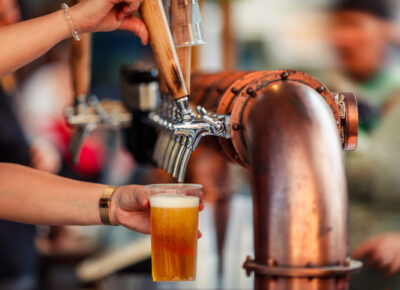Sometime in 2015 the number of US brewers passed four thousand with much fanfare for those that pay attention. It’s easy to think of this a truly American achievement, but the fact is we are a relatively young country and I wondered if there was somewhere else that we could learn a few things. Being of British decent, I naturally looked at England. Personally I love British beer and I love the beers in the US styled after British beers (give me a bitter, brown or porter and I’m happy).
The British beer industry has been around much much longer with roots tracing back to the Romans and as such has had plenty of time to grow and shrink, be regulated, deregulated and reregulated – to me an interesting place to dig a little deeper. Today it has approximately 1,285 brewers or roughly one per 50,000 people. The US has approximately one per 75,000 so probably still some room to grow. As recently as the 1980’s the British industry was one where brewers owned the majority of pubs (so named for the publican or licensee of a public house). A brewer-owned pub was known as a “tied house” and one not owned by a brewery a “free house”, which of course is the de facto model in the US. As a child I distinctly remember seeing free houses mainly because they were so uncommon and therefore interesting.
By the late 1980’s six national brewers dominated the market (Bass, Courage, Grand Met, Allied, Scottish & Newcastle and Whitbred) and served only their own beers in their pubs. In 1989 it was decided that this vertically integrated model was restrictive and uncompetitive to the detriment of the people. By way of Order 1989 (commonly known as the “Beer Orders”) the Competition Commission restricted the number pubs that could be owned by large breweries to 2,000. The response by the industry was to spin off the majority of pubs into purely pub-owning companies today known as PubCo’s. The result was not great and in 2003 the Beer Orders were abolished.
Today the British beer industry is seeing year over year declines and there is a lot of finger pointing both at Parliament as well as PubCo’s that are accused of taking the charm out of the British pub. The truth, as always, is probably somewhere in between. The reality is that larger demographic trends away from alcohol consumption are shrinking the number of consumers. Add to that the increase in “off-license” locations (supermarkets) and an over-expansion by the PubCo’s, and the publicans are the resulting casualty.
So what have we learned? Government intervention didn’t help, but big business wasn’t much better. What does that mean to America’s beer industry? As the number of brewers increase, so does competition. Competition is typically won by those with the highest price or lowest cost. Those that can’t scale like Anheuser-Busch, look to brewpubs where they can sell premium pints. I would be surprised to see a restrictive “tied house” model take root, but if brewer-owned brewpubs come to dominate and say InBev owns most of them, I could see Congress taking notice and that’s probably not good.

